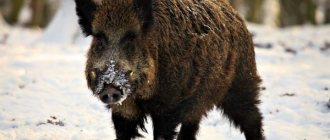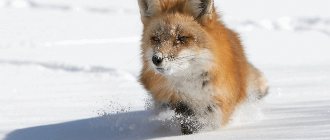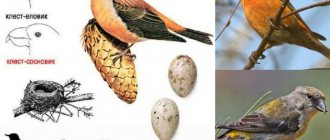As children, we all listened to fairy tales about an unusually smart and cunning animal. The fox is indeed distinguished by its resourcefulness and natural ingenuity, which allows it to quickly find prey and hide from its pursuers. Famous owners of fluffy tails have been able to settle in almost any natural area. The fox is a common predator of forests, steppes, mountains and deserts. It would seem that everyone knows everything about this mammal. However, starting our story, we see that our description of the fox is quite stereotypical and is based on a folklore image. Even this world-famous beast has its secrets.
Fox classification
Fox is the common name of a genus from the wolf subfamily, which unites 11 species. Its structure is sometimes disputed by adding or excluding certain species. For example, they are classified in this genus because of the similarity in appearance of the Arctic fox. Until now, many zoologists cannot decide which family the polar fox belongs to. While this beast occupies a position outside of a certain clan. The following species are considered true foxes:
- common fox;
- Afghan fox;
- Bengal fox;
- American fox;
- American corsac;
- African fox;
- corsac;
- South African fox;
- sand fox;
- fennec;
- Tibetan fox.
The closest relatives of foxes are the following genera:
- arctic foxes (arctic fox);
- maikongi (maikong or savannah fox);
- bat-eared foxes (big-eared fox);
- gray foxes (island and gray foxes);
- small foxes (small fox);
- South American foxes (Securan, Paraguayan, Andean, Brazilian, Darwin and South American foxes);
Despite the stunning external resemblance, the maned wolf is not a fox wolf. This unusual animal is a relict species that managed to survive the extinction of most of its former society.
Where do they live?
Afghan
The historical range of foxes is the north of the African continent, America, and Europe. They are found throughout almost the entire territory of Asia with the exception of some northern and southern territories.
The common fox was introduced to Australia in the mid-19th century. The main purpose of the introduction was to hunt breeding rabbits. In addition, the introduced animals themselves were supposed to become the object of sport hunting.
Foxes very quickly adapted to the new habitat, and their population in the south of the continent increased significantly. Currently, Australian foxes have become a serious threat to some local animal species: anteaters, dwarf kangaroos, marsupial badgers. Not long ago it was found that predators have learned to climb trees and hunt koalas.
Where does he live?
The fox prefers to settle in relatively open areas. In the forest it chooses edges and clearings, in the steppe it digs holes on hills and hills, and in mountainous regions it uses small caves as shelter.
Foxes are not migratory animals and spend their entire lives in one territory.
BROWN BEAR
Where does the fox live? Habitat
Nature has rewarded foxes with the ability to adapt to a wide variety of natural conditions. These mammals were able to confidently spread to almost all continents, with the exception of South America and the harsh Antarctica. The habitat chosen by different types of foxes includes:
- North America, as well as some islands near the mainland (American corsac fox, arctic fox, red fox, island fox, gray fox);
- South America (Maikong, Securan, Brazilian, Paraguayan, Darwin, South American, Little and Andean foxes);
- the entire territory of Eurasia (Arctic fox, corsac fox, common fox, Tibetan fox, sand fox, Bengal fox (from India), Afghan (Bukhara) fox);
- the coast of Africa and the Nile Valley (fennec fox, red fox, big-eared fox, South African fox, African sand fox);
- Southern Australia (red fox).
The wide coverage of territories explains the great diversity of species of these mammals and the huge number of adaptations for survival.
Many people mistakenly believe that all types of foxes live exclusively in European and Siberian forests. Only a few species of these animals settled there. Foxes are sedentary animals and try to choose a suitable place to live. They carefully examine the corner they like, remembering the location of ravines, holes, rivers and hills in order to profitably use them for shelters. The red fox hides well from its enemies, confusing and covering its tracks, suddenly disappearing right in front of its enemy's nose. For such extraordinary ingenuity, the talented strategist received the title of cunning and intelligent beast.
steppe fox
In the dry steppes of Asia, in hilly areas with low vegetation, you can find deep burrows left by badgers and other animals favored by a cunning predator. The steppe fox does not like when its peace is disturbed, so it fiercely guards its temporary possessions. Due to the arid climate, these animals have to constantly migrate. The steppe fox, or corsac, travels from the Volga delta and the Caucasus to the mountains of Western Siberia. Very rarely they move away from their usual anchorage. Sometimes these cunning animals also enter the forest-steppe, where the common fox gives them tough competition, often capturing prey from a smaller relative.
Mountain foxes
Mountain foxes are inhabitants of harsh rocks. Their diet and lifestyle depend on the altitude of their “living zone”. For example, the Crimean mountain fox builds abandoned burrows, holes in rocks and stones, caves and even tree hollows. This diversity is due to the fact that the Tauride Mountains, covered with forest, are quite low with a warm climate. The Tibetan fox lives on the high Tibetan plateau and is sometimes found in areas north of the Himalayas. These animals dig their own homes and lead an extremely secretive lifestyle. Scientists still don’t know exactly how long highland foxes live and what they eat.
sand fox
In semi-deserts and deserts the conditions are truly extreme! All inhabitants of this dry and hot area will need to collect all the devices that nature has given them in order to survive. The sandy area without a single hint of vegetation and coolness does not allow the spread of large herbivores and rodents. That is why only a miniature eared fox, for example, a fennec, can live here. These animals settle near small dry bushes or in a tiny clearing of sparse grass where they make burrows. In their shelters they wait for the night. What the fennec fox eats lives right next to the mink. The animal pulls roots out of the sand and hunts small rodents, reptiles and insects.
polar fox
In the far north, in the land of eternal snow, furry cunning creatures also live. The polar fox even inhabited the territory on the islands in the Arctic Ocean. The usual natural areas for arctic foxes are tundra and forest-tundra. The polar fox settles in hilly areas where shelter and food can be easily found. Arctic foxes are distributed from Alaska to Chukotka. These animals thrive in icy Greenland and on other islands abandoned in cold waters. As the weather gets colder, Arctic foxes move south, temporarily settling in new places.
Habitats
Animals can live on different continents. They are found in Europe, Asia, Africa, South and North America, and Australia.
Foxes settle on the slopes of ravines and hills; they choose sandy soil. Burrows must be protected from flooding with melt water and rain. Animals most often occupy someone’s burrows and less often dig them themselves. The main condition is that the home must have several exits. Some individuals do not disdain tree hollows and caves, settling directly in them.
Habitat of the common fox
Description of the fox
Foxes are incredibly beautiful animals to which songs, poems, fables and even paintings have been dedicated. Depending on their habitat, these predators acquire unusual appearance features compared to the usual forest beauties.
The fox got its poetic name for its coat painted in gold. The Slavs always observed the inhabitants of the forest, noticing any distinctive details of appearance, behavior or even voice. Translated from Old Church Slavonic, “fox” meant “yellowish.” That’s why cheerful red mushrooms are called “chanterelles.”
There is another version of the interpretation of the word. A number of etymologists believe that “fox” is derived from the Slavic “lis” (wife, husband). This theory is also explained in different ways: some explain that some species of these predators create monogamous pairs and raise cubs together, others suggest that this is what cunning wives were called. There is a third assumption. The word "fox" comes from the Polish "liszka" (dashing). Thus, the mischievous nature of the animal is noticed.
Functions of a fox's tail
All foxes have a fluffy long tail, which not only decorates the animal, but also serves as a useful adaptation for survival. It allows you to develop greater speed when running, being a special pole for balance. The tail also serves as an effective rudder. When a predator (for example, a dog) is chasing a red-haired rogue and is about to grab it, the fluffy train turns sharply at a right angle and the animal instantly turns to the side. The pursuer rushes on in bewilderment.
Many have probably wondered: “Why do foxes have a white tip of their tail?” The answer is quite simple. A fox in the forest must constantly monitor its cubs. In order not to lose sight of the little ones among the foliage, a white beacon was created, which every little one cheerfully raises for mom.
The fox stores some nutrients in its tail for a rainy day. This fluffy tool also serves as a blanket for the animal. In cold weather, the fox covers its nose or cubs with its tail. Animals can even communicate using this body part! When raised, it shows the strength of the beast and its readiness to defend territory and prey.
Did you know that a fox's tail smells like violets? Right at its base there is a fairly large gland that produces the aroma of flowers. This is the perfect camouflage device! When escaping from pursuit, a fox in the forest covers its tracks and hides its scent.
Fox's eyes
The eyes of a fox are one of the animal's main weapons when hunting. Vision is tuned to moving objects, which allows you to instantly notice potential prey. Even a butterfly flying past will not be able to hide from a clever predator. Also, all types of foxes are perfectly oriented in the dark, since it is at night that animals go hunting. Not a single bird sleeping peacefully on the ground or in the thickets will go unnoticed.
Foxes have excellent visual memory. This allows predators to remember places of refuge and paths. This ability is very important for survival in the harsh conditions of the wild.
Facial expression
What is the difference between a fox and a vixen, besides everything listed above? Oddly enough, experienced hunters are quite capable of distinguishing males from females by the expression of their muzzle.
It is believed that the cavalier has a more rounded forehead, and the transition from the forehead to the muzzle is much more pronounced than in females. And the muzzle itself is wider, shorter, with a large nose. But the eyes of males are quite expressionless.
As for females, they, as a rule, have expressive eyes and an elongated and thin muzzle. Females have narrower ear set than males.
But this is not always the case; there are males of the fox type and females of the fox type.
Fox fur
The condition of an animal’s fur coat must be acceptable for normal existence in a certain area. All types of foxes are carefully prepared for the environmental conditions in which they will live.
In summer, the coat color of these predators is camouflage. Neither you nor the small animals will notice the approach of the fox. In the north, arctic foxes are dressed in white fur that blends with the snow. In the mountains, where rocks and poor soil combine, foxes camouflage themselves in spotted (gray with ocher) coats. Residents of dry deserts naturally received yellow or light ocher fur. In the forest, the common fox with its dull red robe hides well against the background of branches, earth and fallen leaves.
Until now, scientists have not figured out why the fur of these predators does not adapt in color to other seasons. The fact is that many types of foxes become brighter with the onset of winter. Red, brown and black animals stand out against the background of white snow, which, oddly enough, does not affect the efficiency of hunting.
However, depending on the temperature, the structure of the fox's coat changes. The animal adapts to nature. In summer, the fox's fur is sparse, dull, without undercoat, and lies tightly to the body. This makes it much easier to keep your body cool. In winter, after seasonal molting, foxes dress in thick clothes. The thick undercoat prevents heat from escaping and keeps you warm, like a down jacket. The upper fibers are impregnated with a special secretion that prevents the predator from getting wet (foxes often fall asleep in the snow).
Economic importance
The predator is of great economic importance. It is not only a valuable fur-bearing animal, but also a regulator of the number of rodents and insects. Of course, red beauties sometimes cause considerable damage to farms, killing chickens and other domestic animals, but their benefits are much greater. They help protect grain supplies by killing small rodents.
People breed foxes on special farms to obtain valuable fur. For these purposes, in the 19th century, a special species was bred - the silver fox. With the help of selection, other breeds with high quality fur appeared.
Silver fox breeding farm
The fox is a mammal with perfect hearing and other hunting qualities. The cunning animal adapts to different climatic conditions and can feed not only on animal, but also plant foods. Such a predator can be kept in an apartment or house, but it is important to provide suitable conditions so that it remains docile and non-aggressive.
What does a fox eat?
All foxes are natural hunters. These animals easily get food wherever they live. What a fox eats depends on the area in which it lives, the time of year and the type of animal. It is also worth paying attention to the age of the predator: young animals are afraid to attack large prey.
A small sand fox in deserts and semi-deserts can easily smell edible roots, hear the movements of lizards, tasty beetles and their larvae, scorpions under the ground, and skillfully attack a gaping rodent. The animal obtains moisture directly from its meager diet.
There is not much suitable food in the north. However, the polar fox was able to adapt to the harsh nature. The animal’s diet includes more than a hundred species of animals and almost 30 species of plants: algae, blueberries, herbs and cloudberries! Everything that the fox can find, she will immediately eat or hide. The polar fox's diet consists of many species of small rodents (for example, lemmings) and birds common in the taiga. Sometimes arctic foxes catch or find fish on the shore and overwhelm stray reindeer calves. Polar foxes do not mind carrion, so they form the retinue of the polar bear, which often shares part of the seal carcass with the small predator.
Almost everyone knows what the common fox eats. The favorite delicacy of this predator is small mice, which in winter become the main source of food. The common fox also eats hares, but hunting them requires a lot of energy. The predator often raids the homes of these animals, eating the cubs. A cunning fox will not refuse to climb into the nest of some bird to feast on eggs and chicks. The animal will also enjoy eating berries, fruits and herbs.
Contrary to popular belief, foxes rarely attack chickens and other poultry. The animal decides to do such an act only in a critical situation, when it is difficult to get food in the forest. The predator often spoils cereal crops, which it eats in an unripe state.
Steppe foxes hunt a wide variety of lizards, snakes and turtles. They will not refuse to eat a toad or a frog. Corsac foxes are excellent at catching rodents (their favorite foods are gophers, jerboas, voles), hares and birds. Sometimes this predator attacks a baby saiga. This happens extremely rarely: the corsac fox is a rather cowardly animal.
In the mountains, it is difficult for the severe Tibetan fox to obtain food. Finding anything edible on the rocks is already a difficult task. The basis of the diet of a skilled predator is dexterous rodents, pikas. The fox runs after them along the cliffs, driving them into traps, or waits at their shelters. But that's not all the fox eats. The beast catches mountain hares and birds, climbs into nests and destroys them, feasts on insects and reptiles. When a cunning animal finds berries suitable for food, it will eat them with pleasure. The Tibetan fox does not mind eating carrion.
What a fox eats also determines seasonality. For example, during salmon spawning, many predators stop hunting. There is enough dying fish to last everyone for several months.
How to hunt
Foxes are excellent hunters. They are observant and smart, have keen hearing and sense of smell, and have good visual memory. The animals run, swim and climb quickly.
When hunting birds, the animal shows great cunning. It walks nearby and pretends that it is not interested in the potential victim. Birds lose their vigilance and become easy prey.
In winter, foxes hunt voles. They listen with their large ears to the sounds under the snow cover, to all the rustles and squeaks, and then quickly dive under the snow or tear it with their paws. This method of hunting is called mouseing.
Winter hunting for voles
Foxes do not leave uneaten food, but try to hide it. Subsequently, they find these hiding places and happily feast on or treat their offspring.
Fox sounds
Everyone is interested in the sound foxes make when communicating. If you watch these animals, you will be pleasantly amazed at how rich their supply of signals is. Every fox sound is reserved for special occasions and situations. Different species have their own voice timbre and language.
The common fox is unusually talkative. The mother constantly communicates with her cubs using a kind of loud purring, interested in their well-being. If any fox cub moves too far or gets carried away with a dangerous activity, the mother will shout out to the unlucky baby with a loud yelp. Sometimes these cunning animals talk to their friends, snorting slightly. A warning of danger will be a heart-rending short cry, reminiscent of a loud “car”.
Fenki live in families and do not like to communicate with other brothers. In general, these mini predators have a rather nasty character, so the appearance of a stranger in their domain is accompanied by nervous, offended chirping and hissing. With friends, little foxes can howl, whine and bark!
Large foxes that live in harsh conditions, such as corsacs, “talk” in a very low voice. These predators live alone and occasionally exchange growls and guttural sounds.
Fox cubs
At first, the fox cubs are covered with undercoat, but after four weeks they dress in an outfit consisting of a yellowish edge. Before the autumn molt, the fur of young foxes is usually darker and more gray-brown than that of older ones.
4-5 weeks after birth, young fox cubs are already playing with each other and basking in the sun in front of the hole. The mother, who left them only for the shortest time in the first two weeks, looks at their children's games with love and purely maternal patience. To satisfy the fox cubs that are always hungry at this time, she now has to hunt very hard; they say that the male helps her in this matter, but other observers deny his participation.
Soon the female begins to teach the cubs their future craft and brings them beetles, frogs and mice. She vigilantly guards them during carefree, extremely amusing games and immediately invites them to hide in the hole as soon as she senses any danger. If a family is disturbed in a hole, the female takes the cubs away the next night or drags them in her teeth to another hole when they are still too weak to follow her for a long distance. Young fox cubs, hungry and missing their mother, often give away the hole with their yelps, but the mother herself is even more careful when she goes for prey or returns from a hunt. She never dares to rob a hole in the immediate vicinity and always walks towards it against the wind, carefully watching everything around her.
Not noticing anything suspicious, she trots towards it, places her prey in front of the entrance and quietly calls the fox cubs to dinner, which they finish very quickly, but without quarrels. If the female dies, she is replaced by a male, who by that time has managed to fall in love with his offspring, and sometimes by someone else's childless female.
Having taught the children to grasp and catch small living animals and having sufficiently trained the clumsy and clumsy ones with rather sensitive bites, the mother leads them at dusk on a more serious hunt in the immediate vicinity of the hole. Subsequently, when the grain grows, the fox family moves to the fields, where the fox cubs hunt for young gray partridges and half-grown hares.
The harvest of grain forces them to return again to the forest, where foxes, who rarely live in burrows at this time of year, seek refuge in dense thickets or in secluded gorges overgrown with bushes. They make their lair on old, rotting stumps, moss-covered stones or on trampled thick grass in sunny places, where they spend the day.
With the beginning of leaf fall, young foxes gradually separate from their mother and begin to lead a completely independent life. By the end of the first year of life, they become capable of reproduction, and in the third they reach full growth. Under favorable circumstances, the fox reaches a high age, judging by observations in captivity, of over 16 years.
Fox breeding
Female foxes reach sexual maturity at two years of age. Smaller species - much earlier, by 9-12 months. On average, an animal can have offspring for up to 6-7 years. For males, everything is arranged somewhat differently. They mature by the age of one year. It is young foxes who are especially willing to participate in matchmaking.
The time of mating games is distributed differently for each species of fox, depending on certain factors of the habitat (weather conditions, enemies, landscape, amount of food). Animals calculate the time so that the babies appear during the warm period, when there is plenty of food. As a rule, foxes breed in the middle or end of winter.
Foxes are very smart animals. If animals see and feel that their future family may be in danger (lack of food, emergencies, epidemic, cold snap), they postpone the breeding period for 2-3 months.
In the bitter cold, foxes begin their beautiful matchmaking ritual. Males sing a long song to attract a bride. Sometimes several suitors start fights for the lady they like, who stands on the sidelines throughout the fight and watches what is happening. Having waited for the winner, the female approaches her hero. A pair of foxes folds up. For a long time, these two will frolic: roll in the snow, play tag, “dance” while standing on their hind legs, playfully bite each other’s ears and jostle merrily. Then the foxes go into one of the holes.
Monogamy is a common trait for many species of these predators. The fox often chooses a partner for life. It is very important for animals to stick together. In a difficult situation, such life saves the family. Corsacs, fennec foxes, Bengal and Indian foxes are loyal to their mates. They take turns hunting and cleaning holes. But the red fox enters into temporary marriages (they last no more than a year and a half).
Pregnancy in these animals lasts 48-60 days, depending on the size of the animal and its habitat. The number of cubs in a litter is directly related to the amount of food. In times of famine, the fox does not start a large family. Cubs are born one or two at a time. Many brides never find grooms. And in prosperous years, each fox gives birth to from four to sixteen blind, deaf and toothless puppies.
Reproduction and raising of offspring
Females reach reproductive age at 1.5 years, males become sexually mature at 2 years of age. The mating season of foxes begins in January and lasts until March, so that the birth of babies falls during the warm season. In unfavorable periods, when there is little game around, animals may not reproduce at all, and in hungry years, about 60% of females are left without offspring.
To attract the attention of the opposite sex, females leave discharge everywhere from a gland located near the tail. The smell of fox marks is not sharp and unpleasant, but resembles the aroma of violets.
Types of foxes
Foxes are distributed throughout the globe. The organisms of these animals are ideally adapted to various natural zones. Let's look at the most interesting types of foxes.
Arctic fox
Arctic foxes rightfully bear the title of polar explorers. These snow-white foxes live both in the taiga and far beyond the Arctic Circle. Mischievous animals are able to withstand very low temperatures thanks to their thick fur with a dense waterproof undercoat. In such suitable clothes you will not freeze, and you will be well camouflaged in the white snow! Snowshoe paws save the Arctic fox. The beast does not fall through when running in the snow.
Arctic foxes have perfectly adapted to the cold. They easily tolerate frost of -50 degrees. The rounded body shape minimizes heat loss. Scientists have found that the polar fox begins to tremble only when the temperature reaches -70 degrees!
The Arctic fox is a typical predator of the tundra, subarctic and arctic natural zones. In summer, these animals live sedentary, occupying old burrows, and in winter they go wandering. Arctic foxes often accompany polar bears, who share part of the prey with them. During migration, northern animals go far beyond the Arctic Circle. Sometimes the arctic fox travels 4,500 kilometers in a few months! It's amazing that animals easily find their way home.
There are two subspecies of the Arctic fox: white and blue. It all depends on the color of the coat. The fur coat of polar foxes is ideal for camouflage. In winter these animals are white, and in summer they are black or brown.
In places where snow alternates with earth, arctic foxes are found with a spotted color that perfectly camouflages the predator.
Arctic foxes feed on various small rodents (for example, lemmings), fish, birds, eggs, and seal carcasses. Arctic foxes have the most developed hearing and vision compared to other canids. The animal can hear the movement of a lemming under the snow several kilometers away.
Arctic foxes live in families, which include a pair with small cubs and a previous litter.
The polar fox takes root well at home. If you raise them from childhood, their behavior will resemble cats and dogs.
fennec
In the dry desert there is a cute mini predator. The fennec fox is considered the tiniest representative of the canids. Its dimensions are no more than 40 centimeters in length (with a tail - up to 80 centimeters).
The hardy animal got its unusual name from the colloquial Arabic word “fanak”, which means fox. Fennecs live in northern Africa in desert and semi-desert zones. The dwarf fox has adapted perfectly to these conditions. Thick fur grows on the pads of fennec's paws, allowing them to walk calmly on the scorching sand. Large, outstretched ears are not only able to hear the slightest rustle of prey in the sand (small vertebrates and insects), but also increase blood circulation in the body, which allows it to cool down.
Fennecs live in families in deep underground burrows, which they build themselves. The number of one clan rarely exceeds 10 individuals. Males fiercely defend their territory from strangers.
Tibetan fox
Tibetan foxes are also medium-sized animals (body size without a tail is 60 centimeters, with a tail – up to 130 centimeters). They live on inaccessible rocks of Tibet and the Himalayas, where they dig holes or find suitable cavities under stones.
Foxes hunt in pairs. Each spouse shares his spoils. Tibetan foxes feed on pikas and other rodents, hares, birds, reptiles, insects and berries.
Tibetan foxes don't mind their neighbors. Many pairs live and hunt in the same territory.
Big-eared fox
Big-eared foxes live on the southeast coast of Africa in the savannas. They thrive in hot climates. Outwardly, these small animals look just like an ordinary fox, only with very large ears.
When searching for food, predators rely on their keen hearing. The eared fox often accompanies herds of antelope, where it finds scarabs and other tasty insects.
The animals are monogamous, but sometimes form triads (one male and two females). Each family member hunts alone. Animals settle in dug holes and ruined termite mounds.
Common fox
The red-haired beauty, familiar to everyone, settled throughout Eurasia, North America, Australia and some areas of Africa. Such a wide distribution causes many variations in color and size of the predator. Among the fiery red brothers there is even a black fox (silver fox).
The color variability of these animals is greatly appreciated by people. A fox at home acquires a more saturated shade of fur.
Foxes hunt alone. Their prey includes small and medium-sized rodents, hares, birds, lizards, frogs, snakes, turtles, fish and insects. In winter, food becomes significantly less. The common fox uses all its skills to catch agile rodents under the snow. This method is called "mousing".
Lifestyle of foxes
Unlike most members of the canine family, which tend to form packs, foxes prefer to live and hunt alone. The only exception is the periods of raising offspring, when red predators form a mating pair and jointly care for the cubs. Foxes also enter into temporary alliances with their relatives to hunt large game birds, for example, geese and black grouse, or secretly raid a rural chicken coop.
Lifestyle of foxes
The activity of foxes does not depend on the time of day; they can go out in search of food both during the day and at dusk. And yet, they often hunt under the cover of darkness, and when the first rays of the sun fall to the ground, they return to their shelter. During the day, foxes hunt only when absolutely necessary: when they were unable to catch anyone at night, or they need to provide food for growing cubs.
The fox indulges in a day's rest after a grueling hunt
Each fox has its own territory, which contains its hunting grounds and several hidden shelters. Interestingly, red animals do not use holes as a permanent home. They set up underground lairs only for the period of raising offspring, or as backup shelter options. And so, foxes do not have a specific place to rest; they can settle down for the night in an old hollow, in a niche in a rock, or even just among lush thickets of grass.
Foxes rarely conflict with their relatives, because these animals are very tactful and try not to violate the boundaries of other people's possessions. Animals ignore this rule only in case of a shortage of food, and then a quarrel arises between the furry owner of the territory and the uninvited guest, which develops into a fierce fight.
How do fox holes work?
Although foxes are excellent at digging holes, they rarely bother themselves with such an activity. Cunning animals prefer to occupy empty shelters of other forest inhabitants. Having discovered an abandoned hole, the fox begins to equip it, expanding the premises, and adding several emergency exits.
Sometimes red animals move into a den that has an owner. For example, foxes live in the same hole with a badger, occupying the next chamber. True, badgers are not too happy with impudent tenants, because these clean animals cannot stand the pungent smell emanating from the fur of foxes. Therefore, the badger often leaves his habitable dwelling to the red cheat, and he digs a new hole, trying to choose a place away from representatives of the fox family.
On the personal territory of foxes there are several shelters, and these are not only underground burrows, but also deep rock crevices, cave grottoes and depressions in rocks. Interestingly, some dens can be connected by underground passages, which allows the animals to successfully hide from hunters and their dogs.
Enemies of foxes in the wild
Since ancient times, foxes have been known as cunning and cautious animals. They had such qualities for a reason. Foxes have many enemies from which they need to somehow escape.
Some animals deliberately attack tailed animals. Among the enemies of foxes:
- wolverine;
- bear;
- wolf;
- large birds of prey (for example, eagle and golden eagle);
- a larger fox of a different species;
- predatory cats (lynxes, pumas, leopards, tigers);
- domestic dog;
- badger.
Eagle owls, crows and hawks also attack the cubs of red predators.
By behavior
How to distinguish a fox from a fox? Can this be done by studying animal behavior? Yes and no.
Males are known to:
- Less careful than their girlfriends.
- They walk straight, practically not hiding behind bushes.
- During the rutting period they become more dangerous to humans and can attack.
- They bark strangely, especially when responding to the call of a female.
- They will not lead hunters away from the den with the fox cubs.
- They do not have the instinct to preserve offspring.
And now in more detail about each point.
Fox at home
Recently, keeping a fox at home as a pet has become possible. Many people were able to fulfill their childhood dream and make an unusual friend.
Taming of cunning animals began in 1959. Enterprising breeders have developed different breeds of foxes. However, wild instincts are not so easy to bring out. If you want to have a cute pet fox, you need to be on your guard. Without training, an animal can harm humans, other pets and interior items.
A fox at home is a fairly friendly animal. He will be happy to play with you and other pets. This predator is very easy to train. You can teach him a funny trick.
When choosing an exotic pet, it is worth considering what lifestyle the animal is accustomed to. For example, the popular ornamental fox, the fennec fox, is active at night. Sometimes such details can make a person's life difficult.
Do not forget that a fox at home needs some care. The animal can sleep in a spacious enclosure or on a large bedding. The animal needs to be brushed and bathed regularly. Foxes should be taken for walks on a leash.
The Canadian marble fox is considered one of the most popular pets. A beautiful black, gray and white fur coat attracts the eye and literally makes you fall in love.
Population and species status
More recently, foxes were exterminated en masse in order to reduce the likelihood of the spread of such a dangerous disease as rabies. After the advent of oral vaccination, the situation changed for the better, since there was no longer a need for mass shootings of the predator.
Despite this, red fox populations are subject to significant fluctuations. Even in the conditions of the steppe and forest-steppe zones, such fluctuations are quite significant. And yet, the number of this animal remains at such a level that there is no point in worrying about its disappearance. In this regard, the status of the fox does not provide for environmental protection measures, so the predator is not listed in the Red Book.
Decorative fox
Fenech is a very active and nimble animal. His cute appearance attracts glances: it’s impossible not to fall in love with his big ears and black beady eyes!
The size of the animal is very modest: with a body length of about 40 centimeters, the animal weighs 1.5-2 kilograms. Fennecs are distinguished by their cunning and slightly capricious character, although they get along well with humans and cats. They don’t mind playing with their friends (for example, hide and seek or tag).
It is worth keeping fennecs in a spacious cage, which replaces a hole for small hunters. It is worth equipping the shelter with warm, soft towels that will be comfortable to lie on.
Ornamental chanterelles are very difficult to tolerate temperature changes (especially cold snaps). Fennecs feel comfortable in well-heated rooms.
Mini foxes need to be combed regularly. Use soft bristle brushes or small fine-toothed combs for this procedure. Fennec himself really likes this type of fur care.
You can use a litter box for desert foxes as a litter box. Fennecs are very smart, so they quickly understand what this item is for.
What to feed a fox at home?
The fox is an exotic pet, so you won’t be able to buy special food in the store. It is worth trying to include in your animal’s food what it eats in the wild.
These furry cunning creatures adapt well to the new diet, as they are almost omnivores. The basis of a chanterelle's diet should be processed meat (boiled or steamed). The animal's diet can include fruits, vegetables, berries, insects, and raw eggs. It is very important to supplement the animal’s menu with meat by-products: soft cartilage, trachea, bird spleen, offal, liver, beef tripe, heart. Do not feed your chanterelle bones or raw, unpeeled fish - this can lead to digestive problems.
These animals are canines, so if it is not possible to feed them natural food, you can switch to universal dog food. With this option, it is still necessary to occasionally reinforce the predator’s body with vegetables, meat and protein.
Males and children
How to distinguish a fox from a male? The former are more sensitive to their offspring. The mother fox sets up a den in advance for breeding. During the period of feeding the babies, the father hunts and brings prey to his girlfriend. But he has no feelings for the foxes. In addition, especially characteristic males are able to dine on their own cubs.
When in danger, females fight to the death for offspring. Foxes will definitely lead the hunter away from the den, confusing the tracks and thereby saving the fox cubs.
As for males, if a hunter comes across a den with cubs, then the father will not protect the baby. At best, he will try to escape, saving his own skin. At worst, he will surrender to the hunter without a fight.
And even during the period of breeding, the female can be distinguished by drooping nipples.
How long does a fox live?
The lifespan of foxes is almost the same as that of wild dogs and wolves. The natural conditions in their habitat are quite harsh, so not all animals manage to reach adulthood.
In nature, how long a fox lives determines the amount of food, the presence of epidemics, and the number of enemies in the territory. In the wild, the animal rarely reaches the age of six. The average lifespan of a predator is 2–5 years. The animal constantly spends energy searching for prey and surviving.
However, a fox at home or in a zoo remains in excellent health for twenty years! Even at a respectful age, these animals remained cheerful and playful.
How long foxes live in captivity is also determined by the fact that any disease can be cured. Wild predators often die from various ailments.
By tags
Readers may laugh: the fox and the vixen differ in their marks. You will not see a small need relieved by a female, because she squats down like a dog and carefully buries her secretions.
And foxes are more unclean. Males raise their hind legs, leaving calling cards on trees, rocks and bushes. In addition, the urine of males has a characteristic odor, similar to a mixture of acetone and laundry soap. But this smell accompanies males only during the rutting period.











